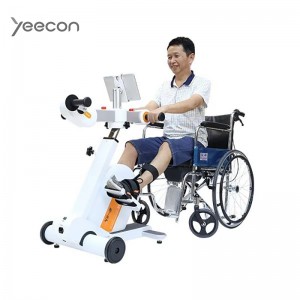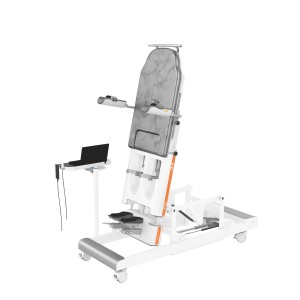Prolonged disorders of consciousness, pDoC, are pathological states caused by traumatic brain injury, stroke, ischemic-hypoxic encephalopathy and other types of brain injury that result in loss of consciousness for more than 28 days. pDoC can be divided into vegetative state, VS/unresponsive wakefulness syndrome, UWS, and minimally conscious state, MCS. pDoC patients have severe neurological damage, complex dysfunction and complications, and long and difficult rehabilitation period. Therefore, rehabilitation is crucial throughout the treatment cycle of pDoC patients, and also faces great challenges.
How to rehabilitate – exercise therapy
1. Postural switch training
Benefits
For pDoC patients who are bedridden for a long time and cannot actively cooperate with rehabilitation training, it has the following benefits: (1) improve the patient’s wakefulness and increase the time of eye opening; (2) stretch the joints, muscles, tendons and other soft tissues in various parts to prevent contracture and deformation; (3) promote the recovery of heart, lung and gastrointestinal functions and prevent upright hypotension; (4) provide the postural conditions needed for other rehabilitation treatments later.
From DOI:10.1177/0269215520946696
Specific methods
Mainly include bed turning, recumbent to semi-sitting, bedside sitting, bedside sitting to wheelchair sitting, recumbent to inclined bed standing position. The daily time away from bed for pDoC patients can be gradually extended as their condition allows, which can range from 30 min to 2-3 h and finally aim for 6-8 h . Use with caution in patients with severe cardiopulmonary dysfunction or postural hypotension, unhealed local fractures, heterotopic ossification, severe pain or spasticity.
From DOI:10.2340/16501977-2269 
Rehab Bike for Upper and Lower Limbs SL4
2. Exercise training, including passive joint activities, limb weight-bearing training, sitting balance training, bicycle training, and limb linkage training, can not only improve the muscle strength and endurance of pDoC patients and prevent complications such as disuse muscular atrophy, but also improve the function of important organs of multiple systems such as cardiovascular and respiratory. Exercise training of 20-30 min each time, 4-6 times a week has better effect on reducing the degree of spasticity and preventing contractures in pDoC patients.
From DOI:10.3233/NRE-172229 
Lower Limb Intelligent Feedback & Training System A1-3
Use with caution in patients with unstable disease, paroxysmal sympathetic hyperexcitation episodes, pressure sores on the lower extremities and buttocks, and skin breakdown.
From DOI:10.1097/HTR.0000000000000523 
Knee Joint Active Training Apparatus
Post time: Apr-06-2023






